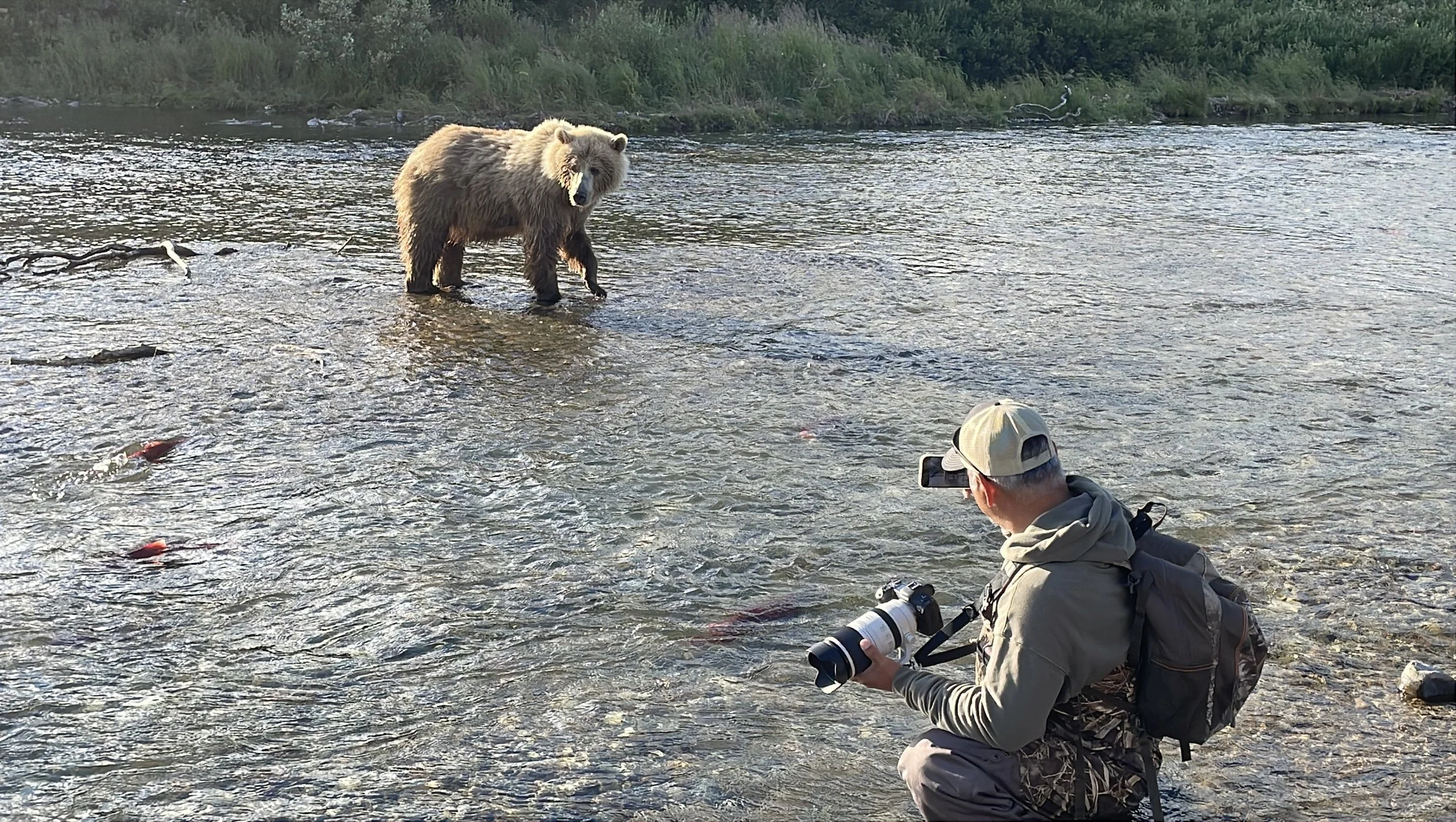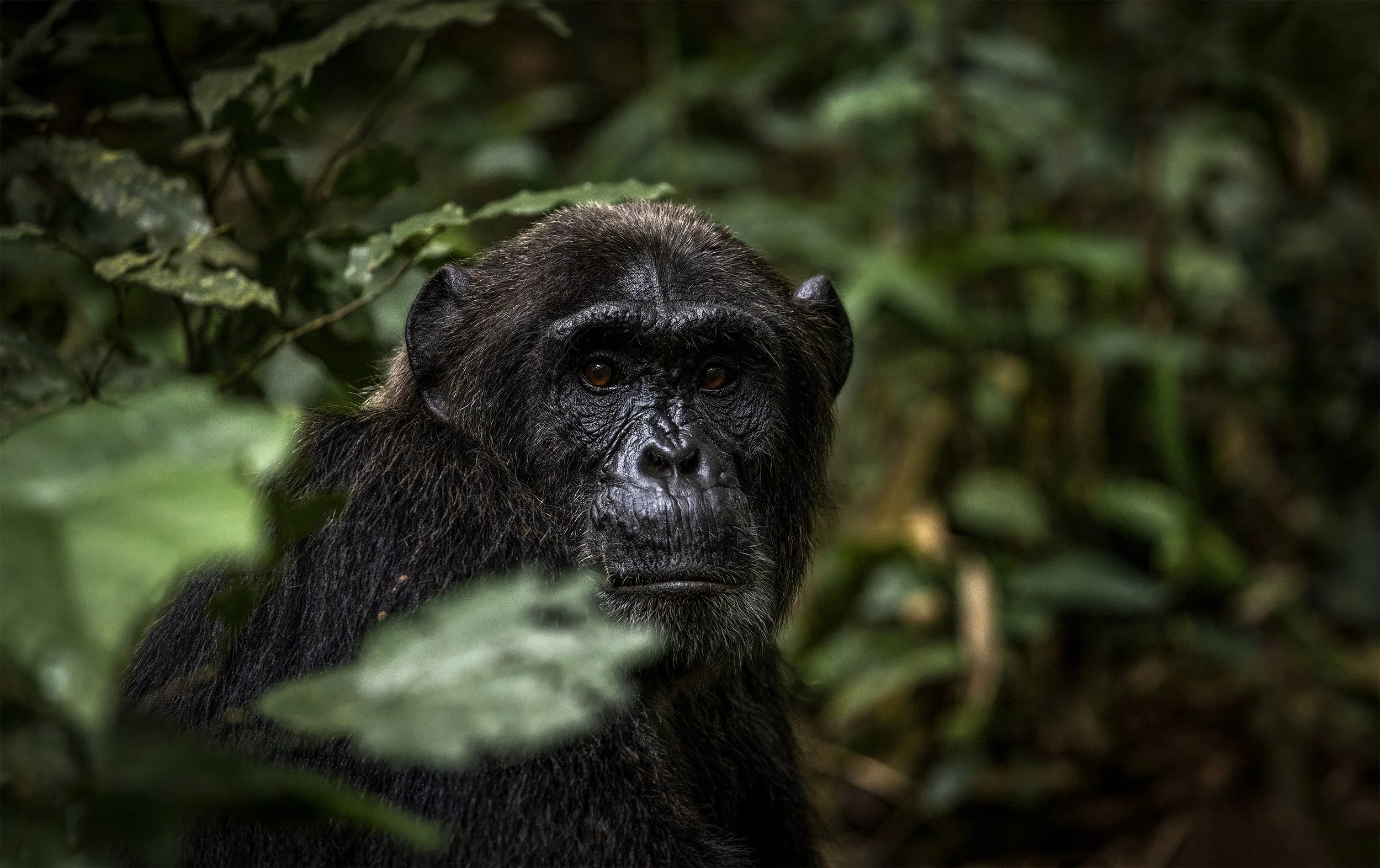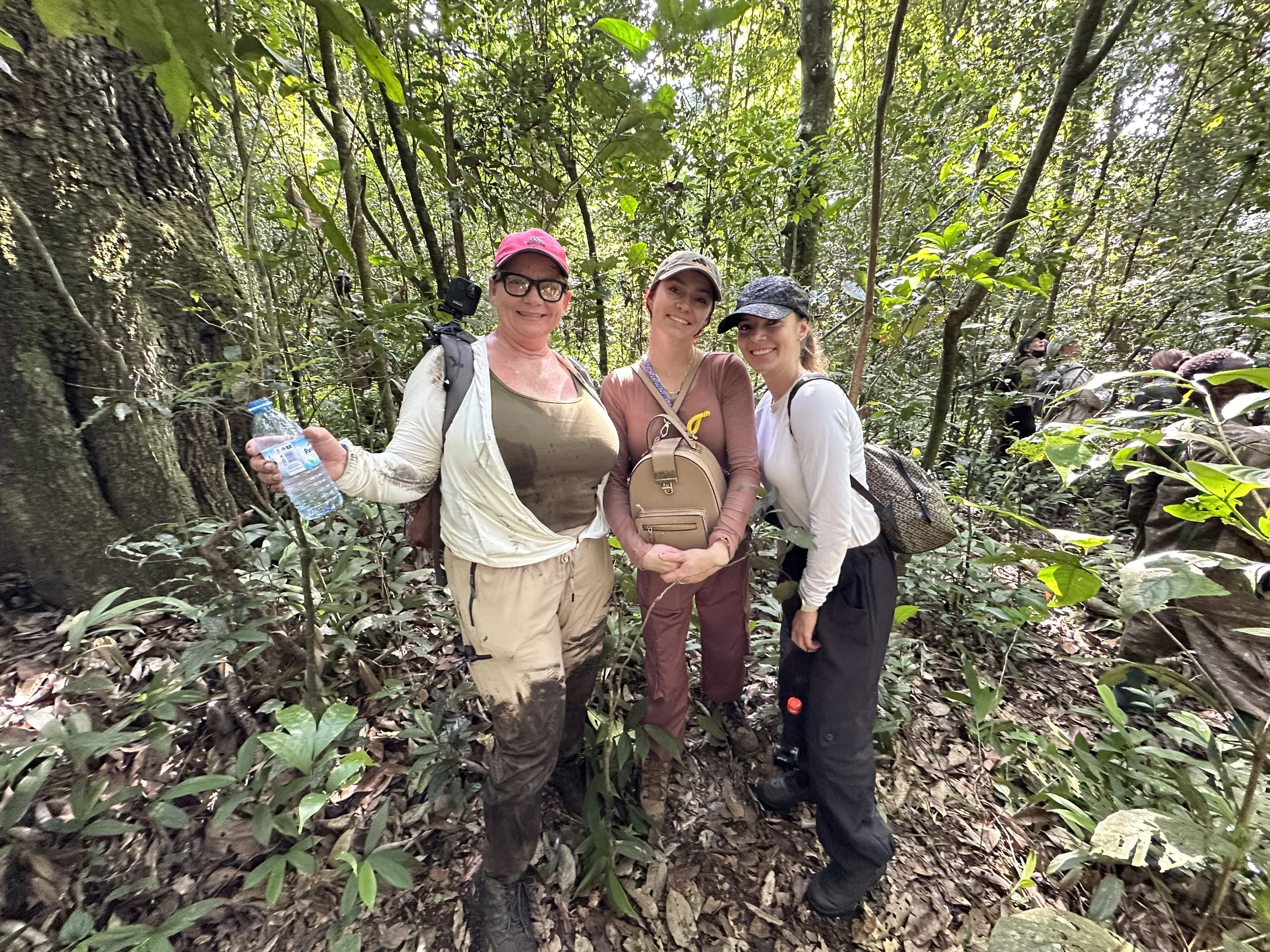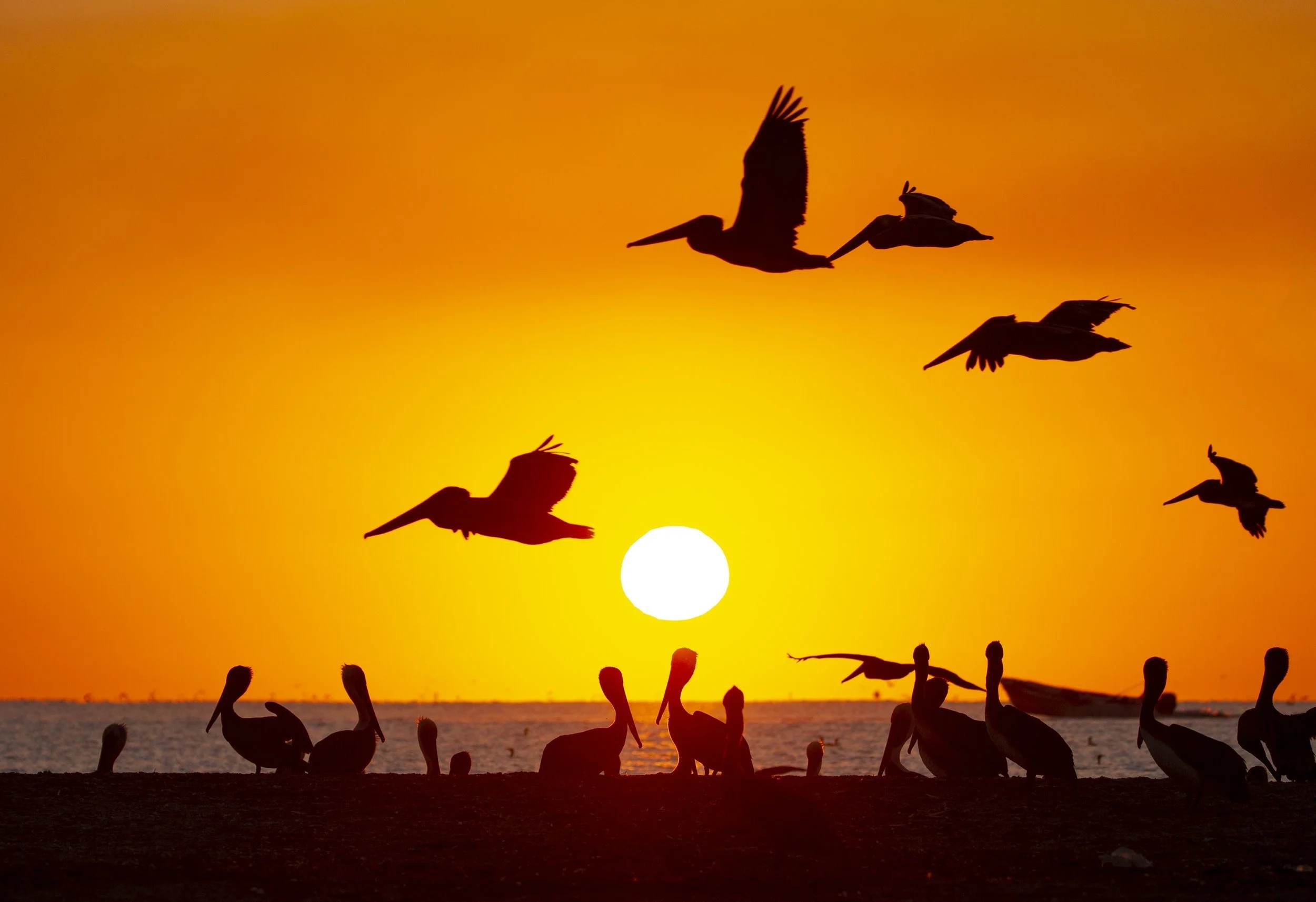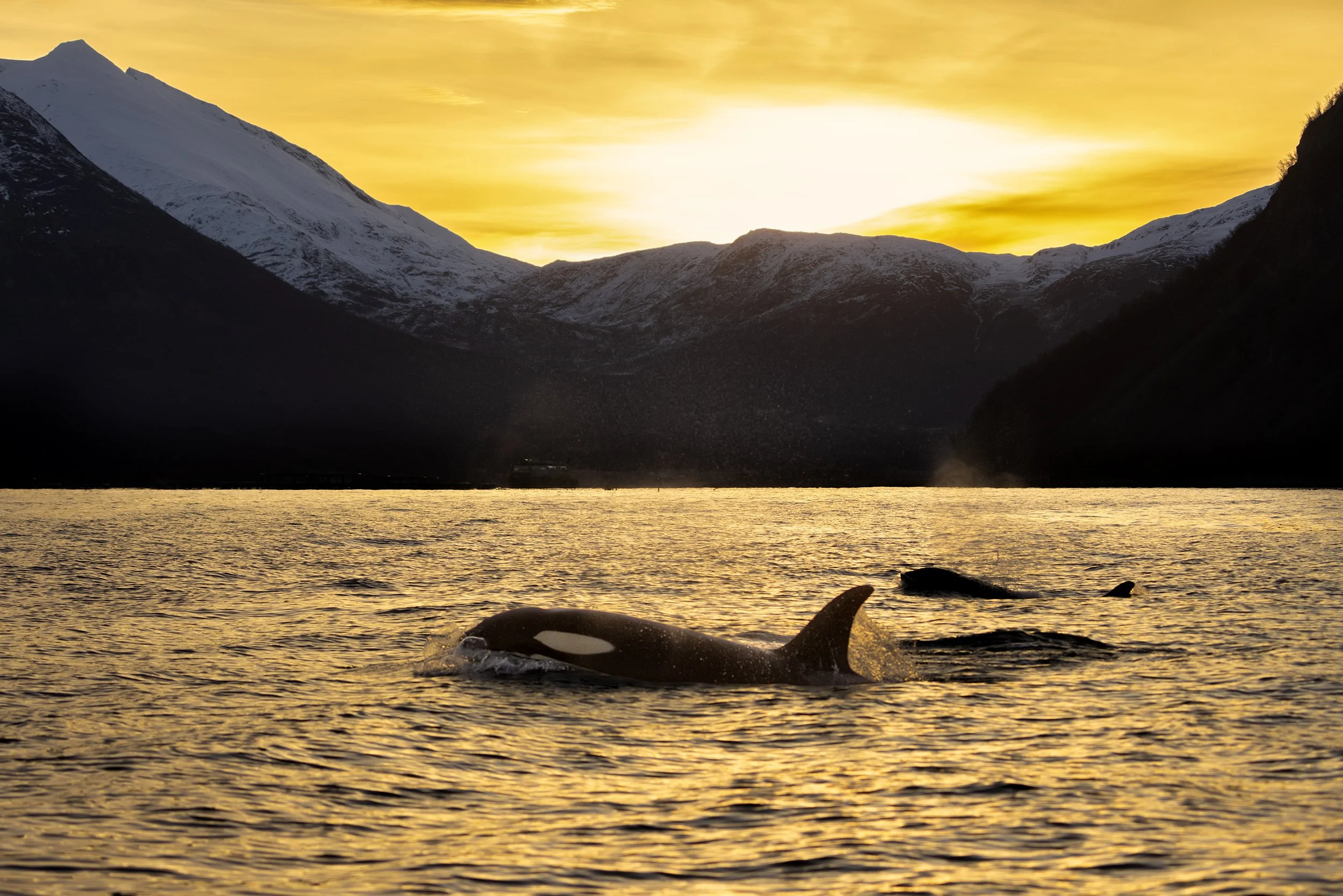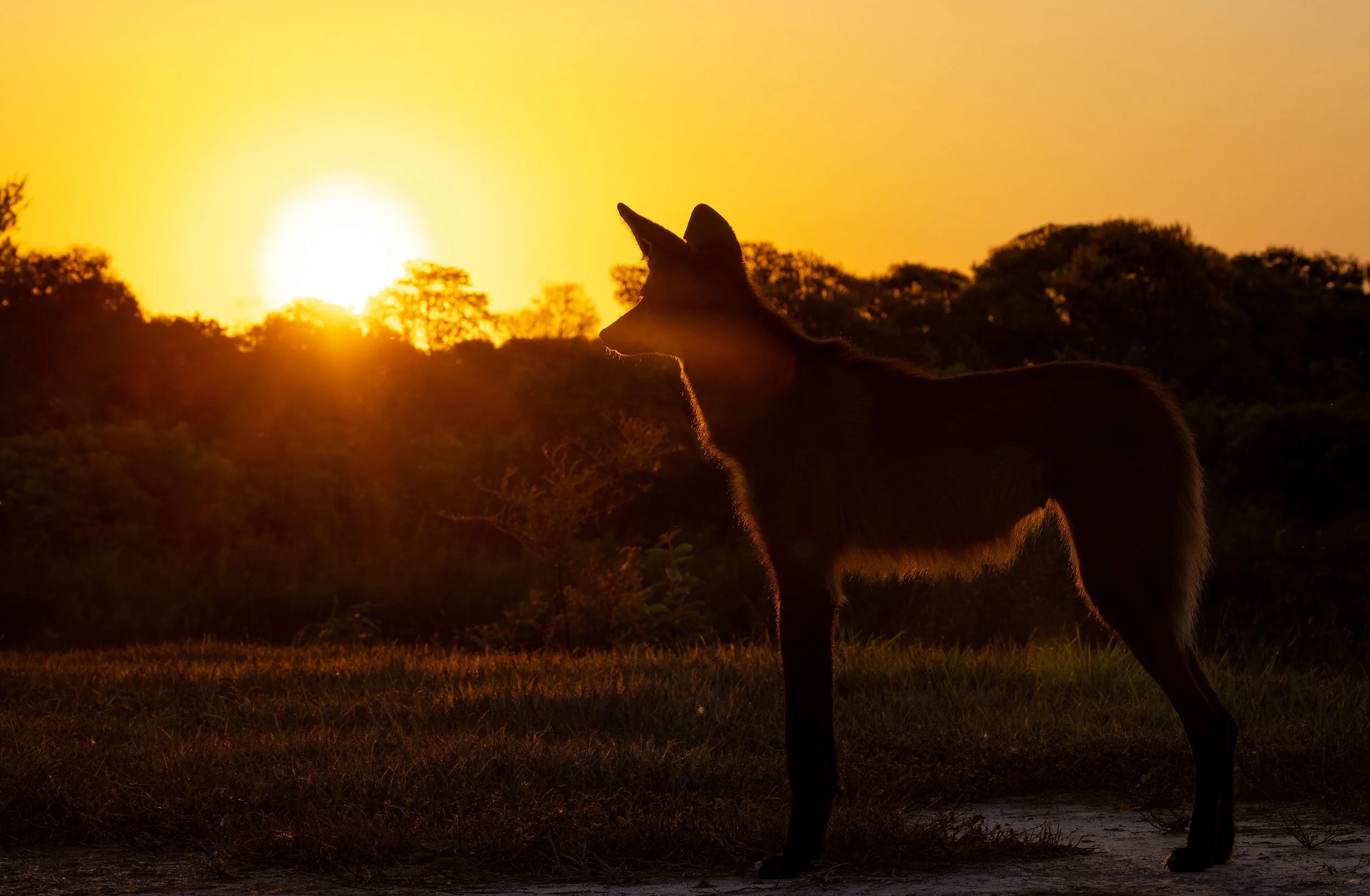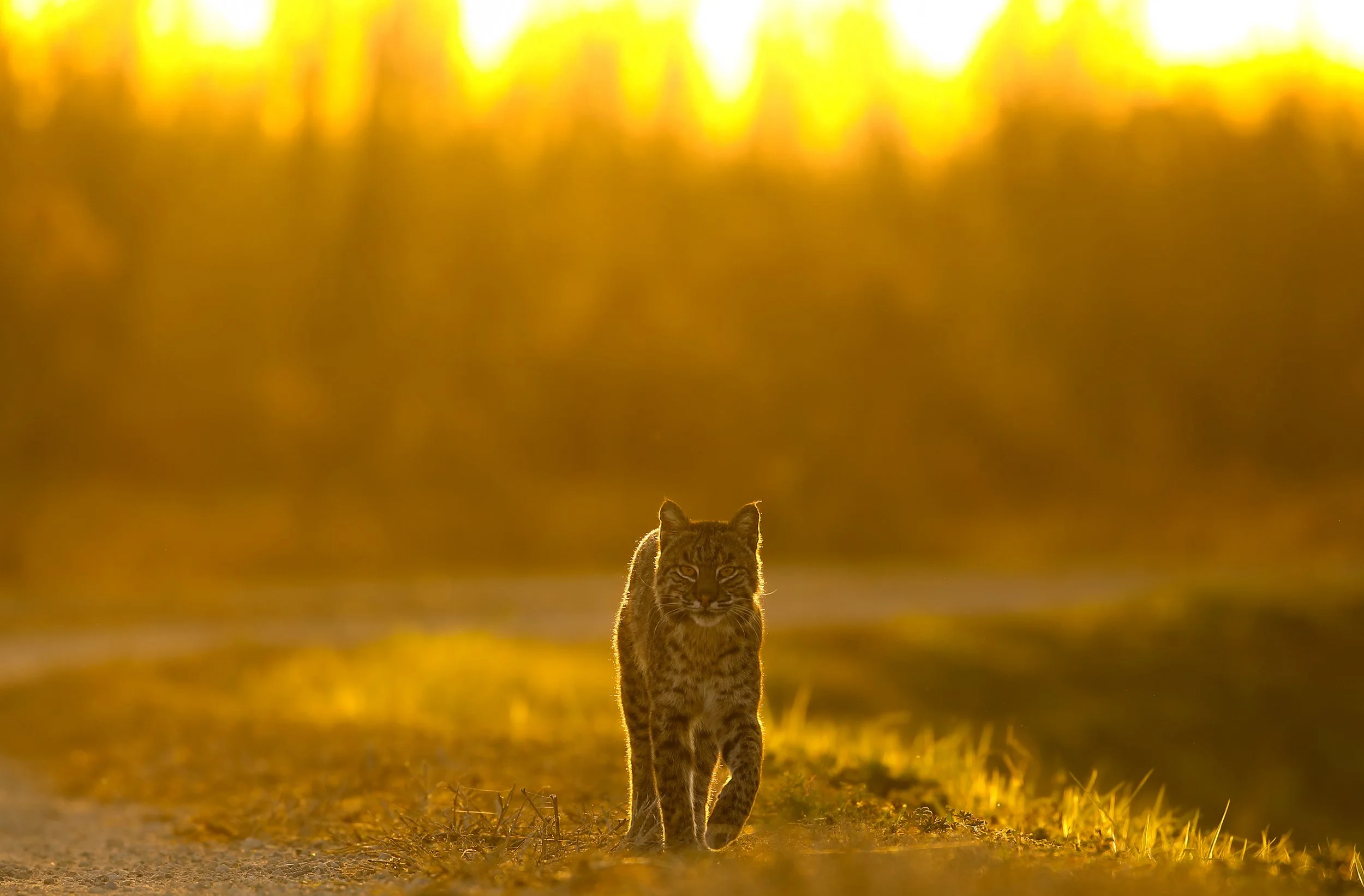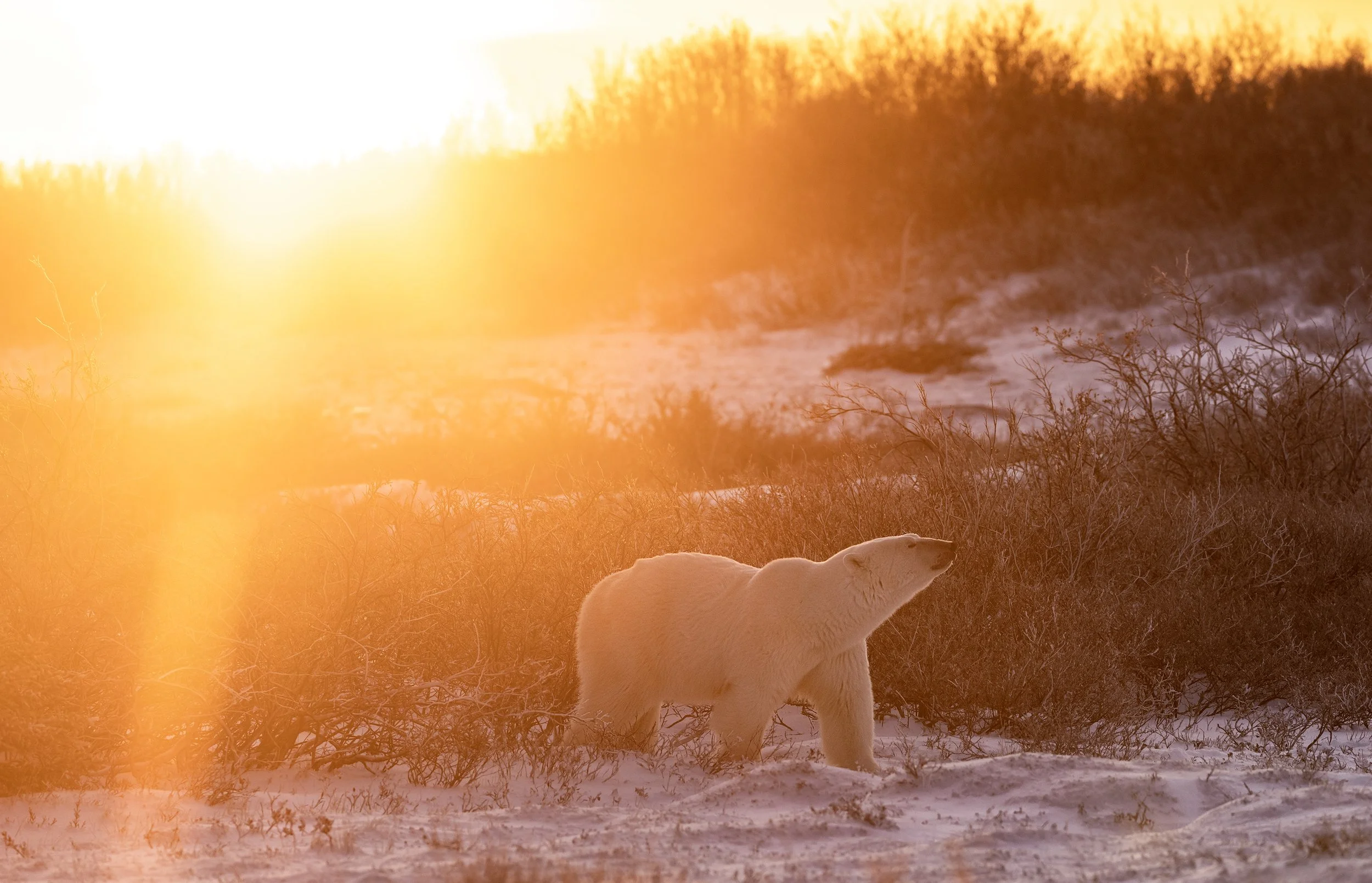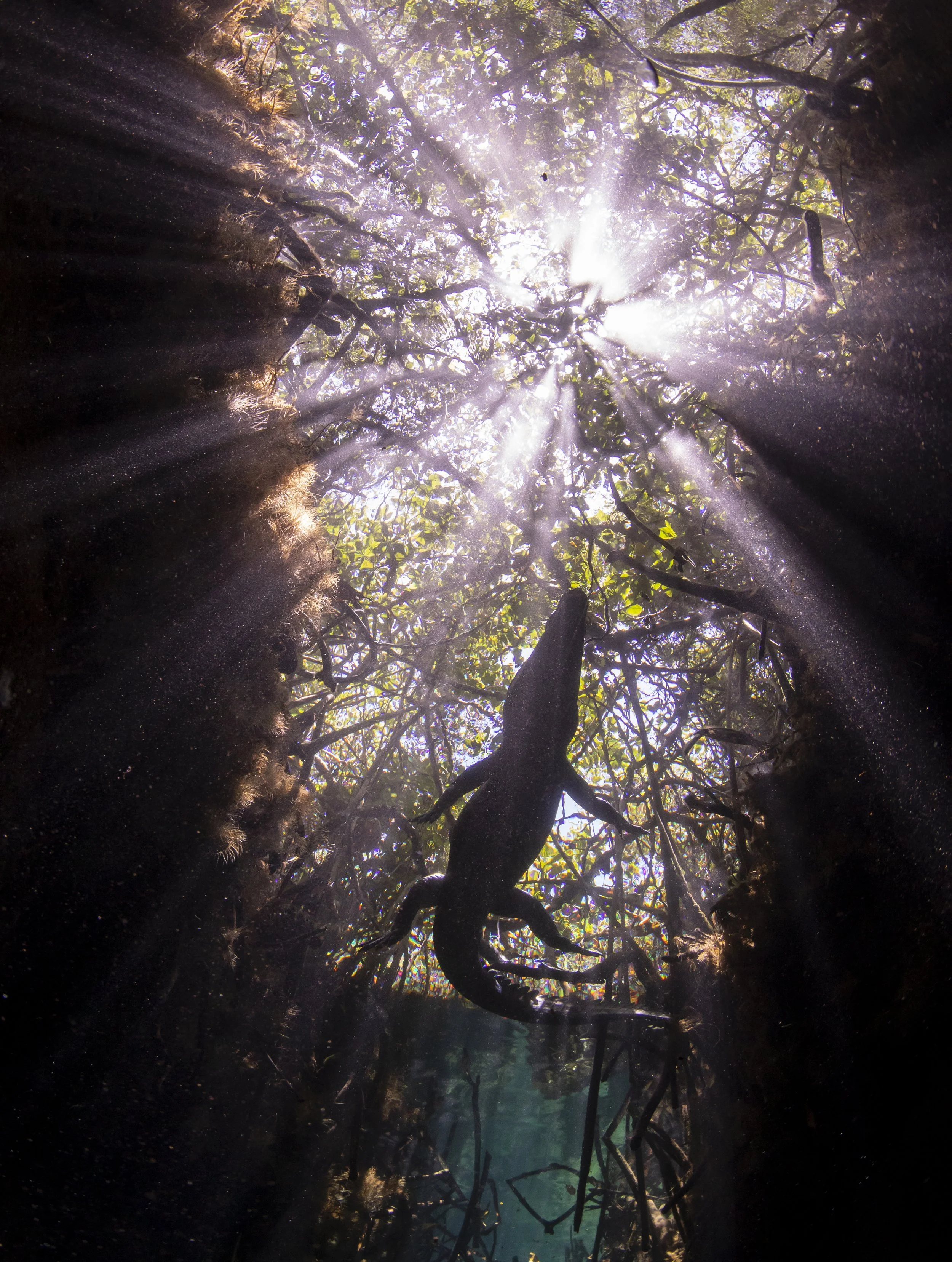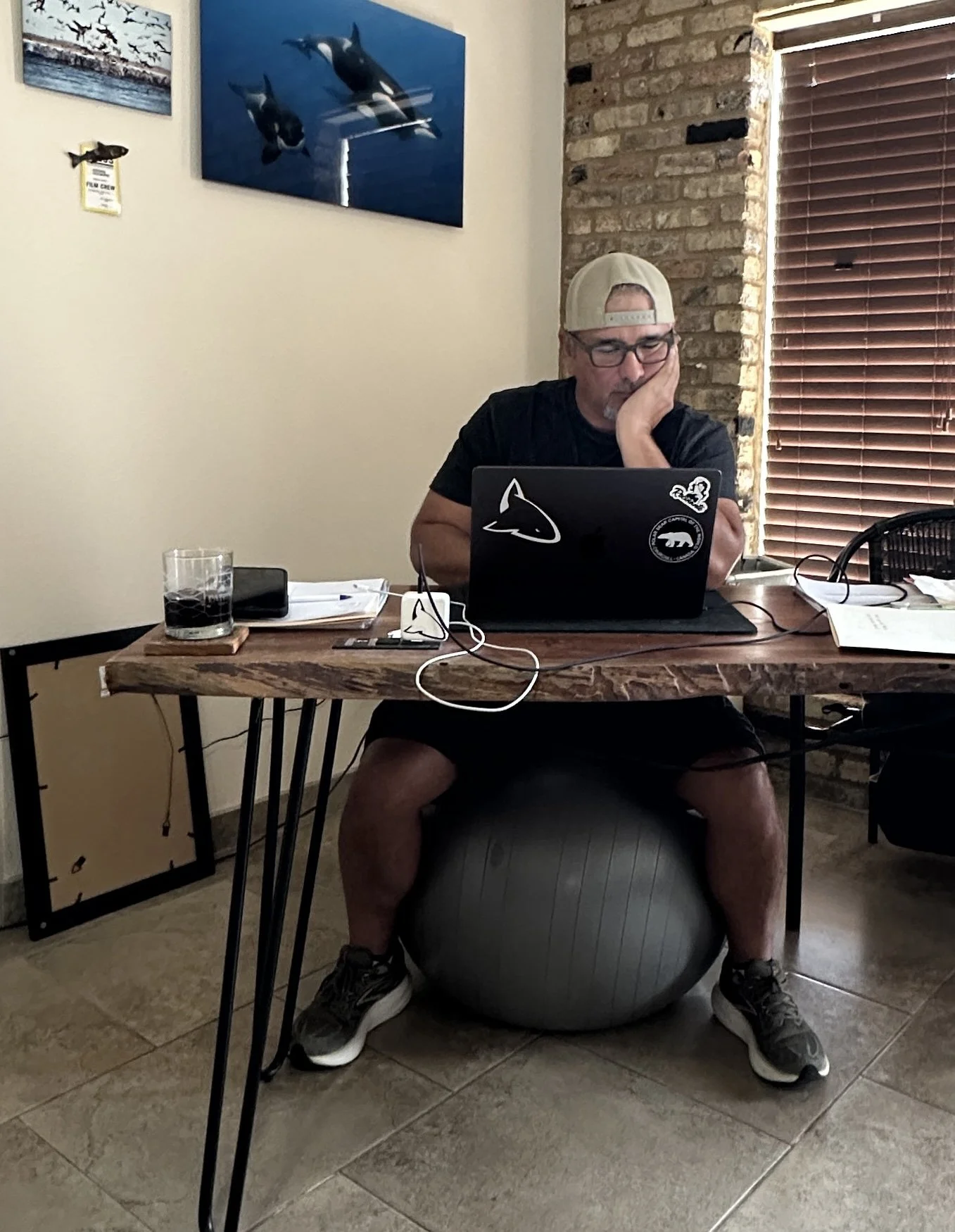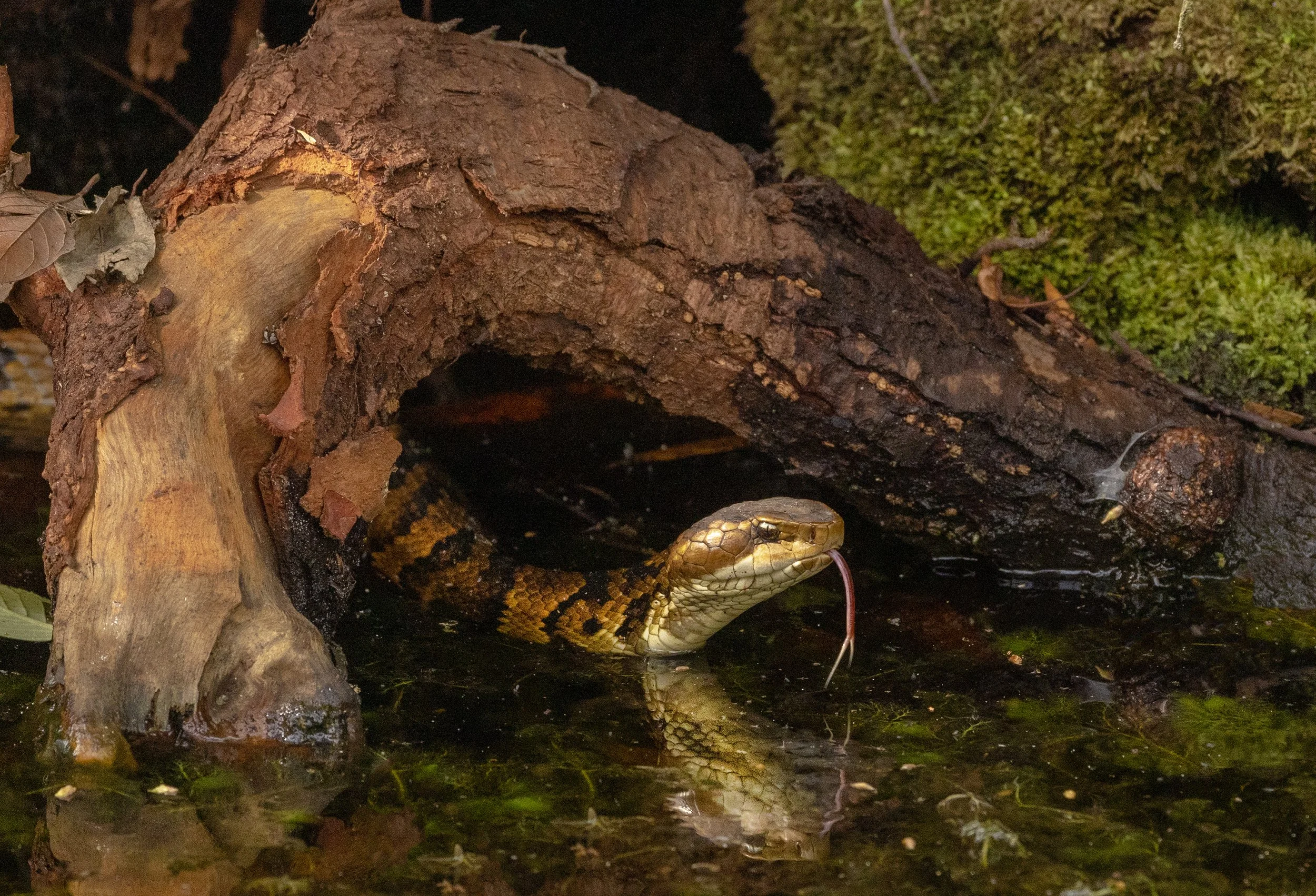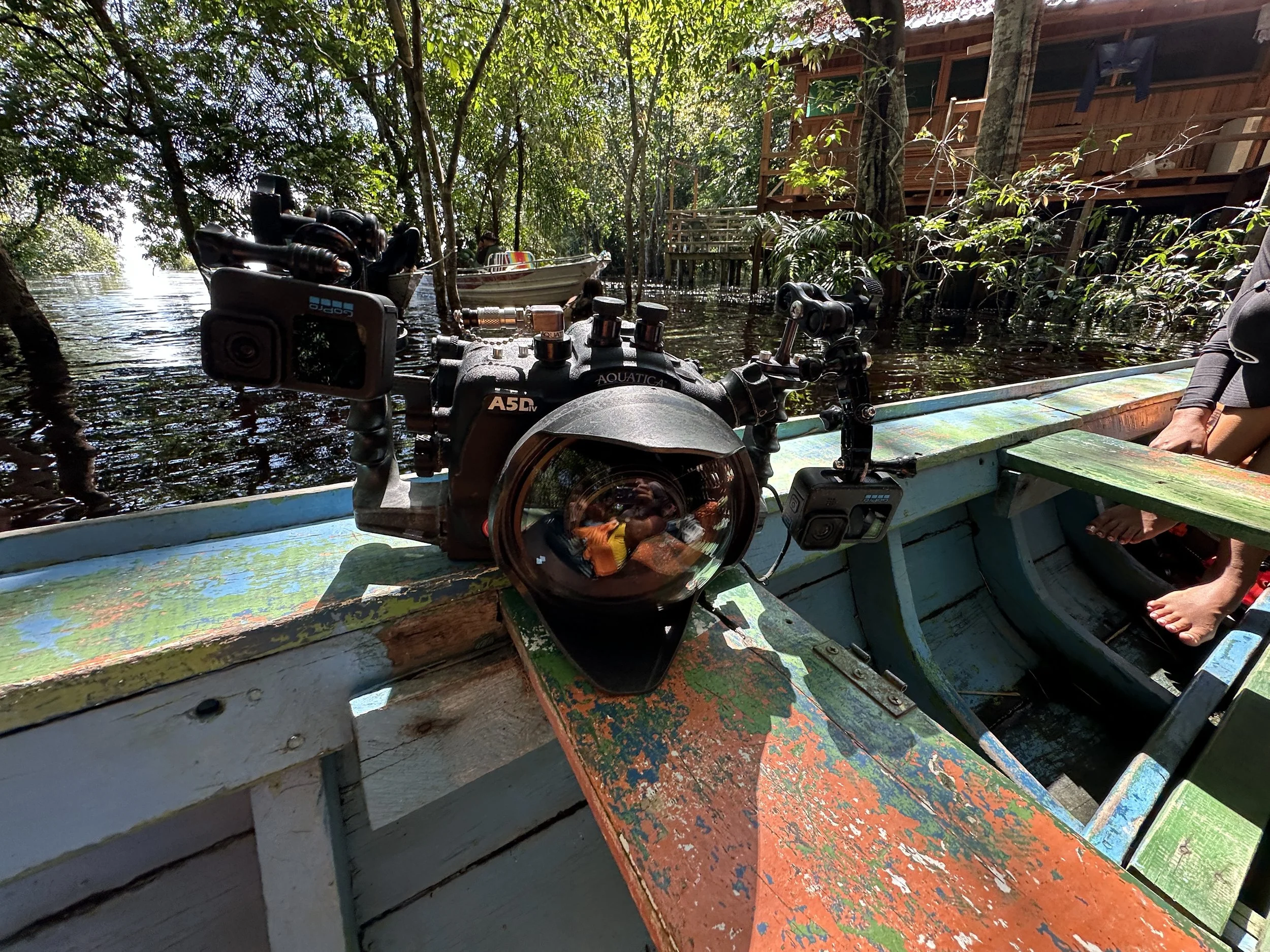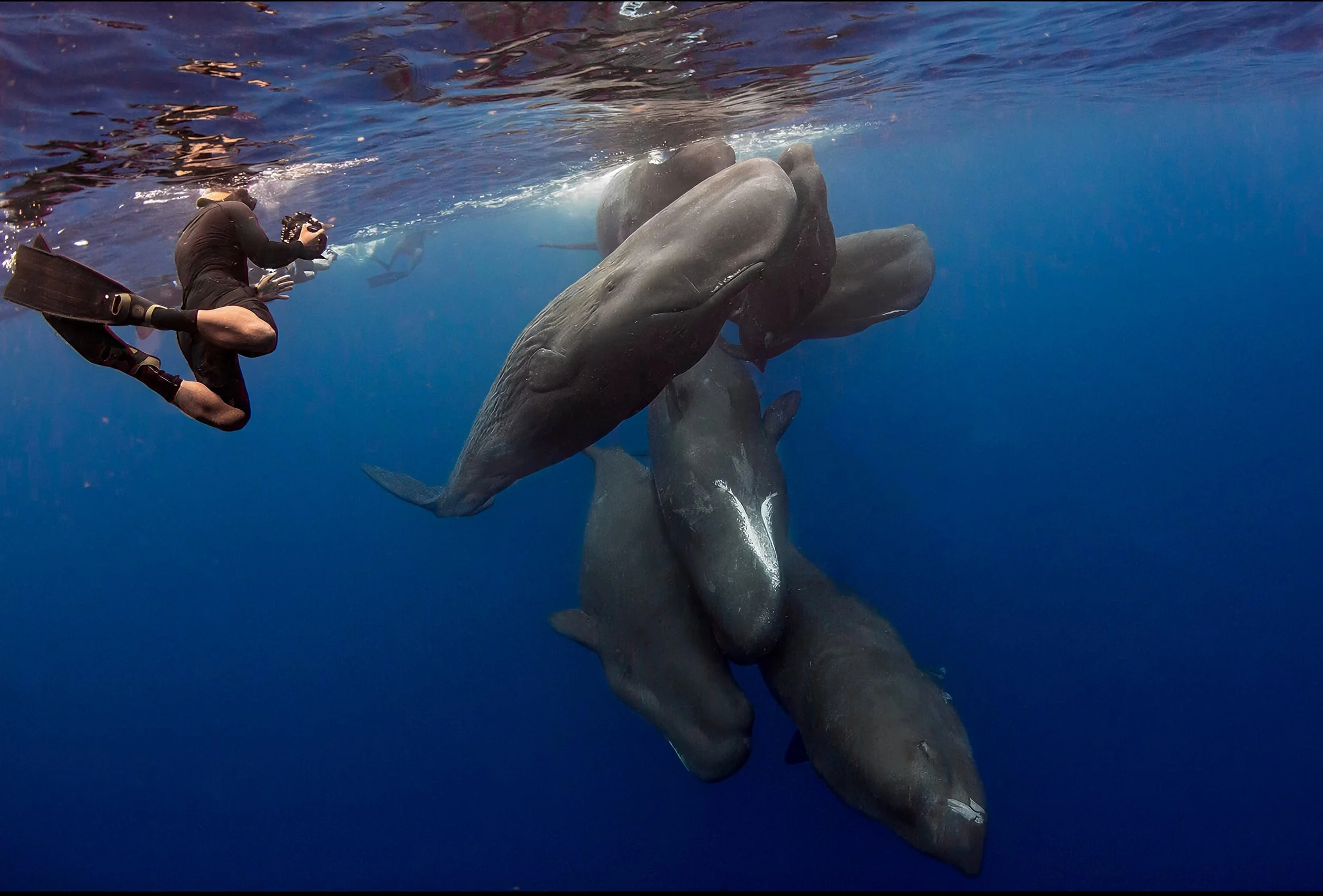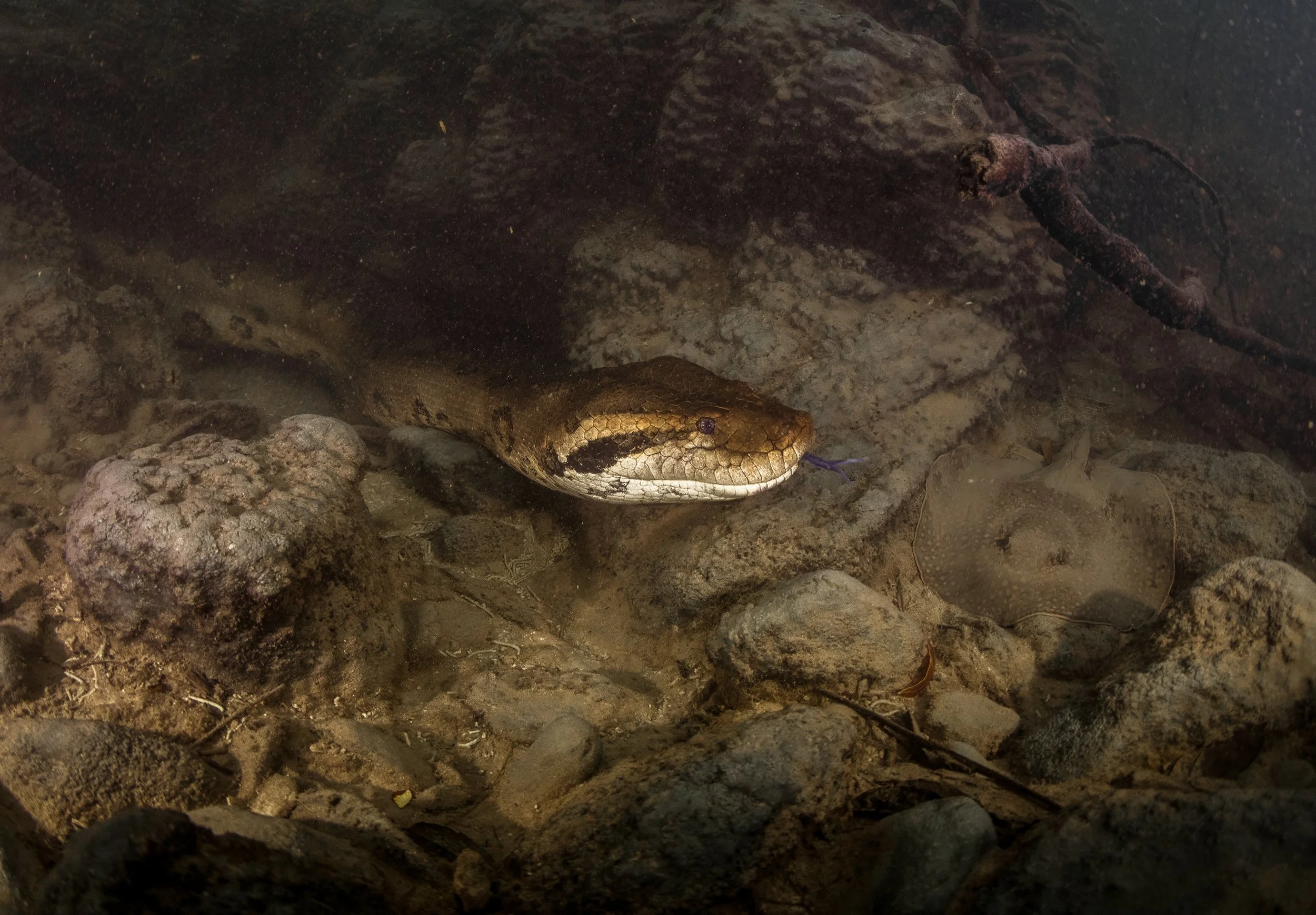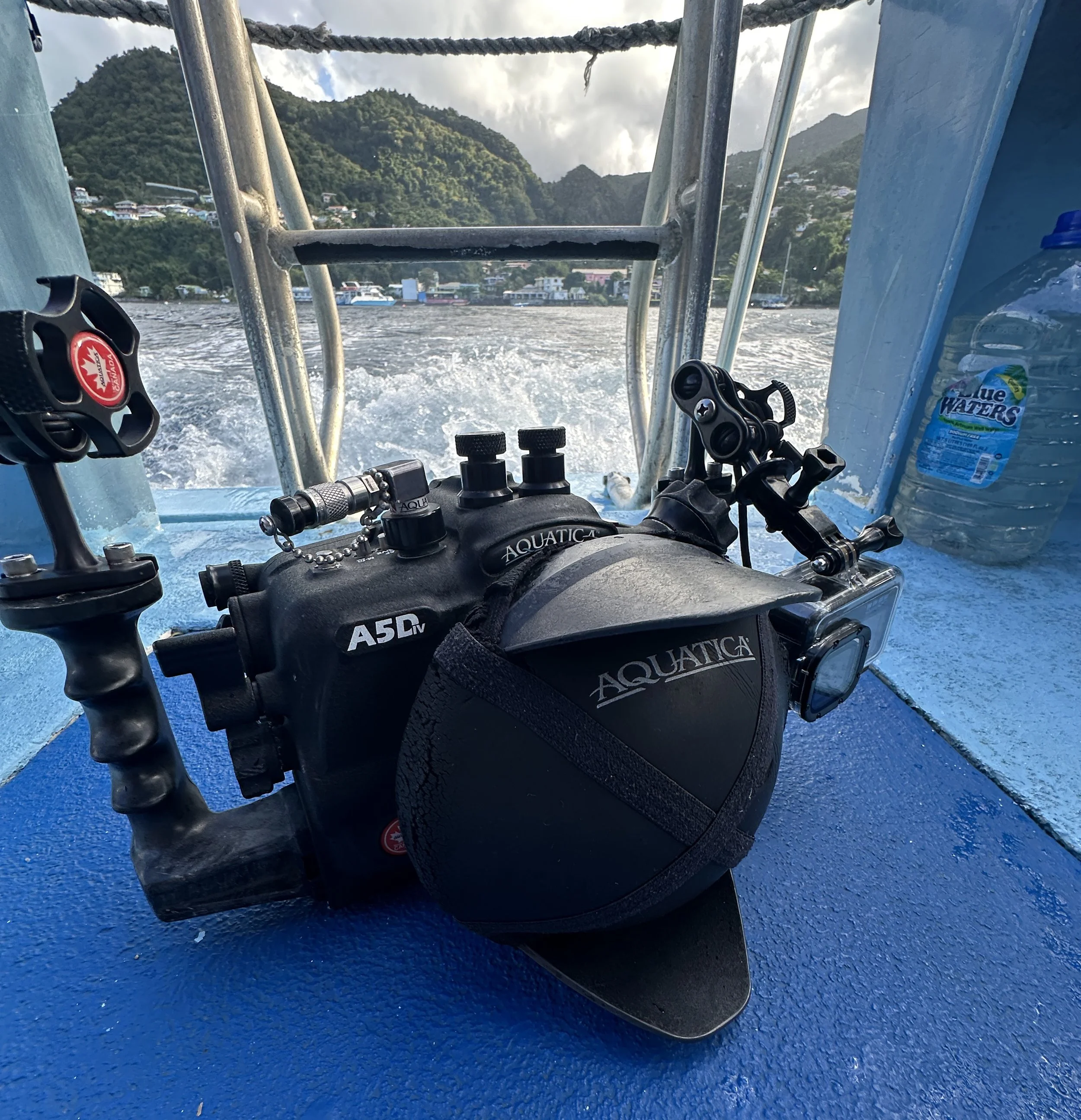We were following a chimpanzee through the forest, moving quietly as it walked with purpose.
For a while, it felt like it was letting us tag along, stopping, listening, glancing back every so often.
But at some point, everything changed.
The chimp took a turn downhill, leading us onto a trail that grew narrower and narrower until it finally disappeared altogether.
Before we knew it, we were surrounded by thick and deep mud.
It was thick, sticky, elephant-made sludge that sucked at our boots and made every step an effort.
I swear that chimp did it on purpose.
There were easier trails all around, but it chose this one, the kind that only a clever ape with a sense of humor would pick.
I could almost picture it now, perched in a nearby tree, watching the clumsy humans struggle in the muck, probably shaking its head.
The mud, we learned, was created by forest elephants trudging through after heavy rains.
It reminded me of those old TV shows from childhood where quicksand was always waiting to swallow the hero, except this was real, smelled awful, and didn’t let go easily.
One of our group, Kimberly sank in up to her thighs. When the guides finally managed to pull her free, her boot stayed behind.
Her daughters howled with laughter as we all tried to help, slipping and sliding in the muddy trail.
By the time we made it out, the chimp was long gone.
It took a while to track them down again, but we eventually did, a little muddier, a little wiser, and a lot more respectful of just how clever they are.
Sometimes, the wild reminds you who’s really in charge, and every now and then, it even has a sense of humor about it.

